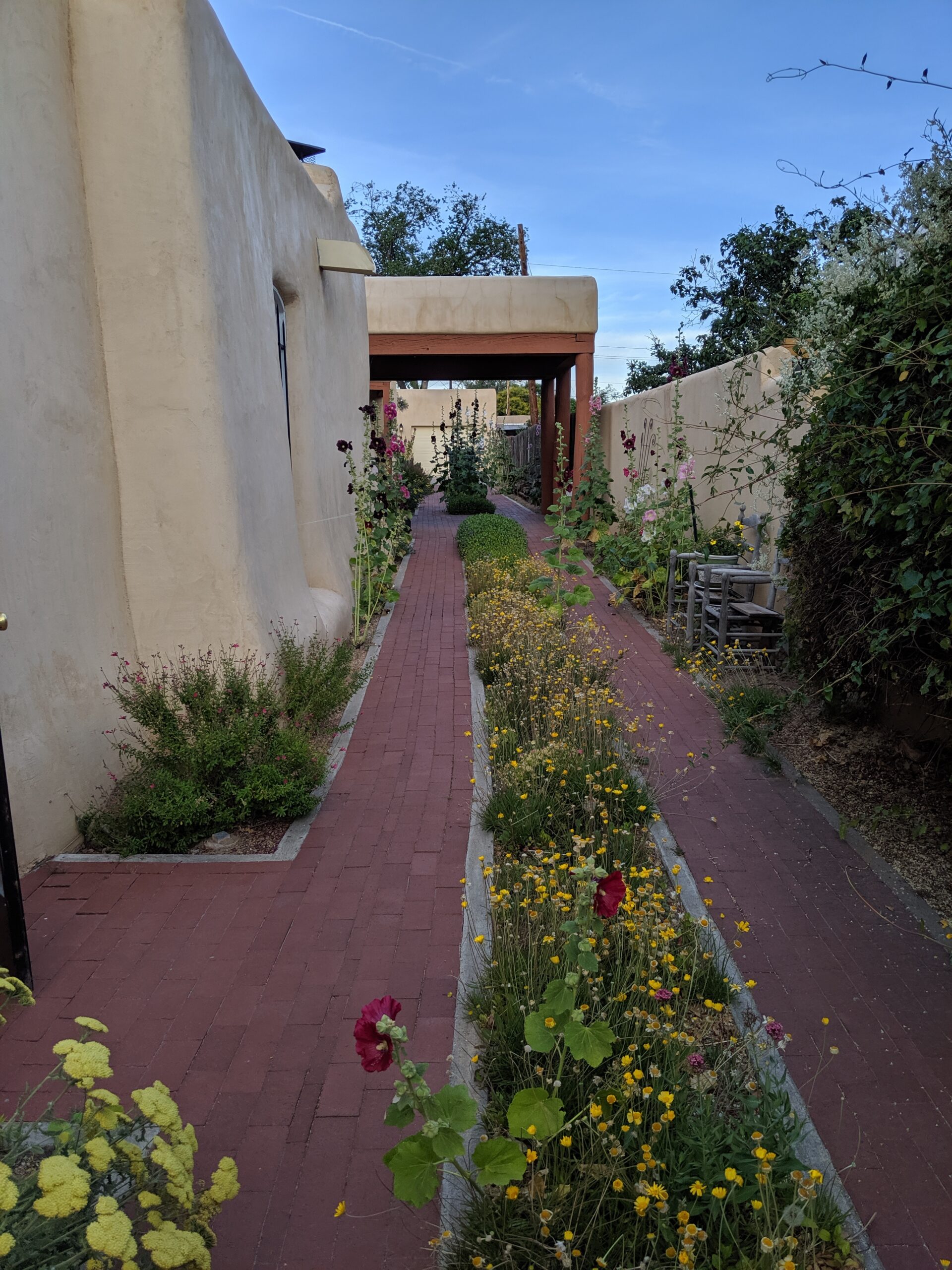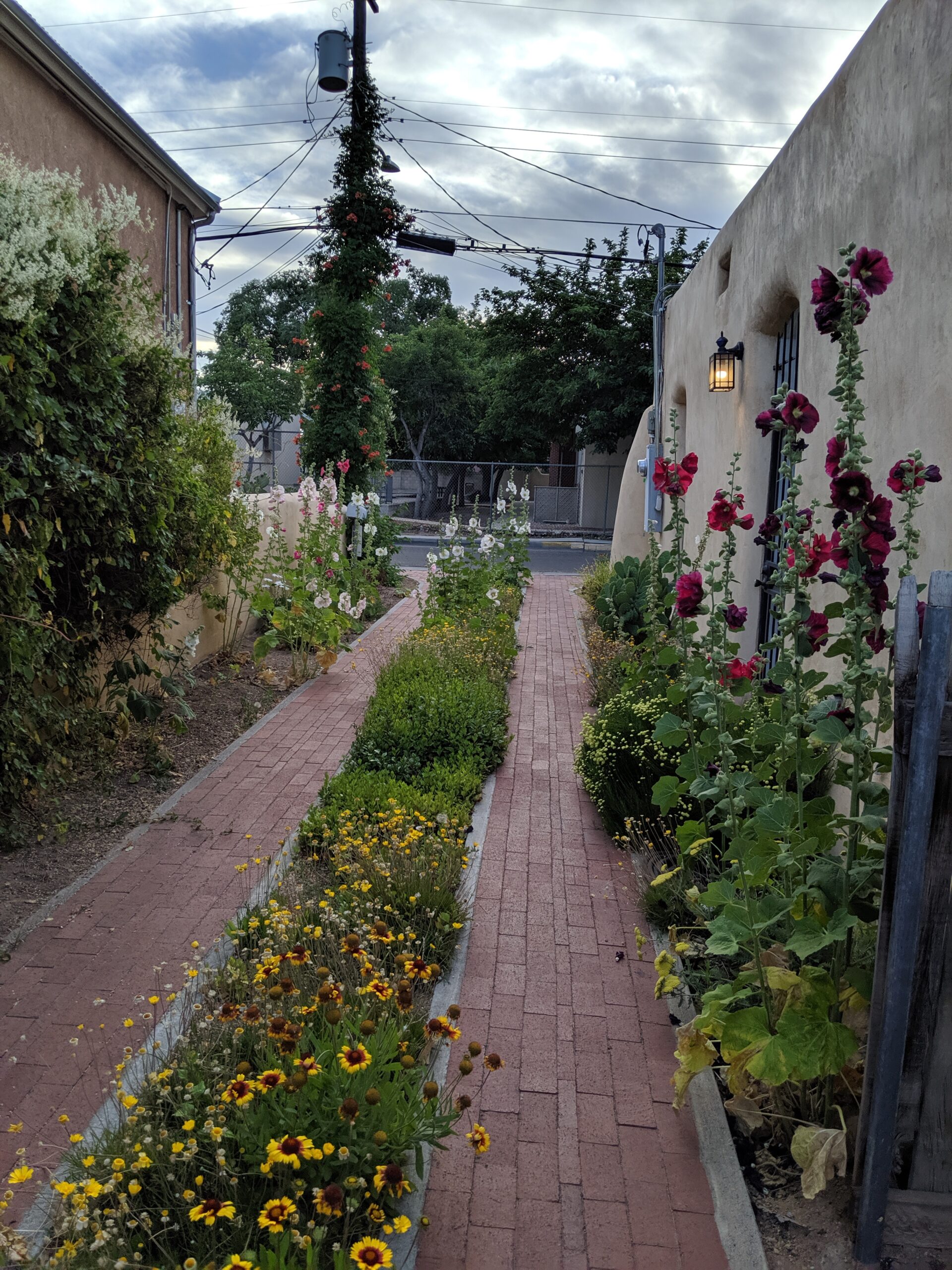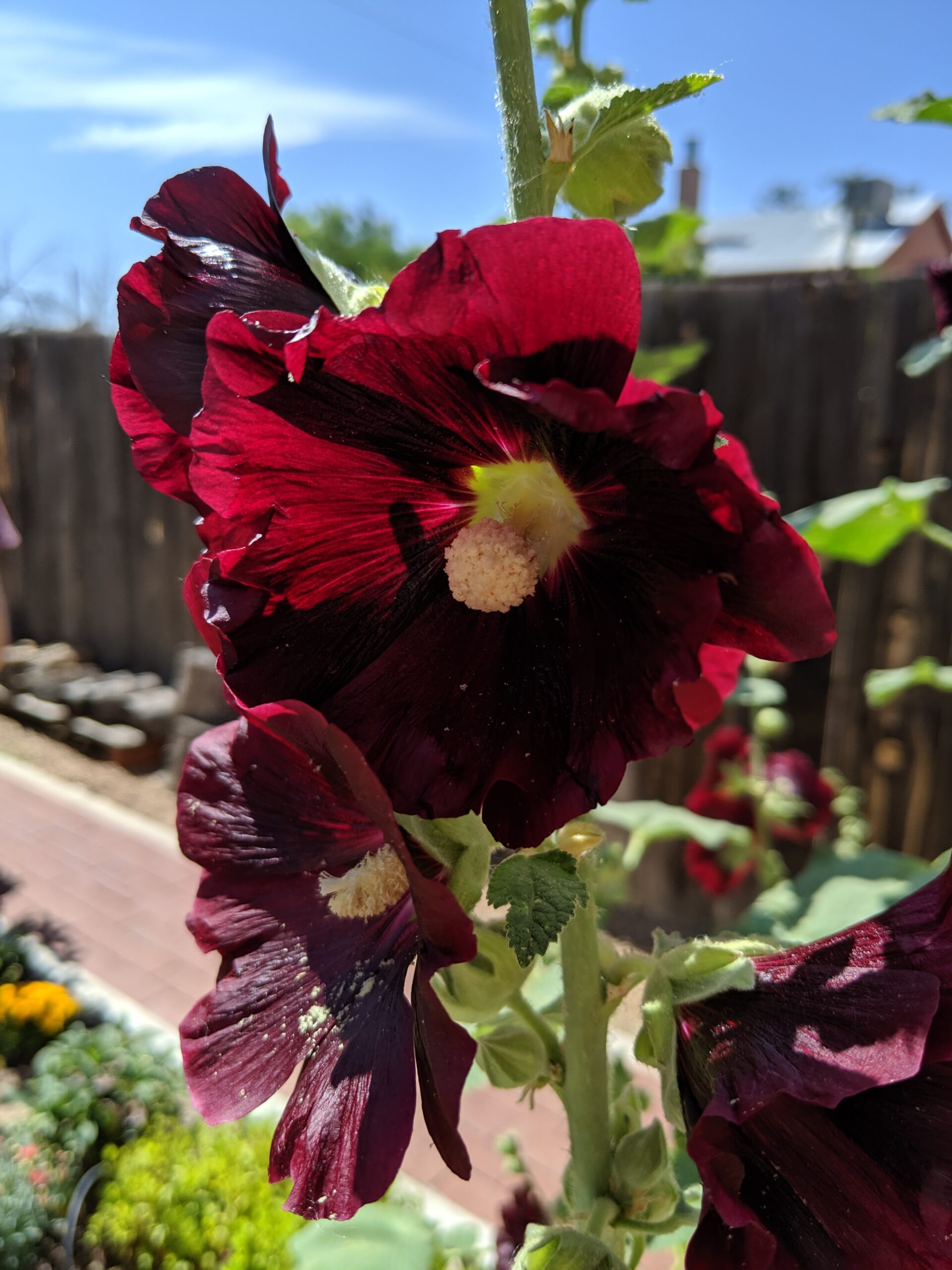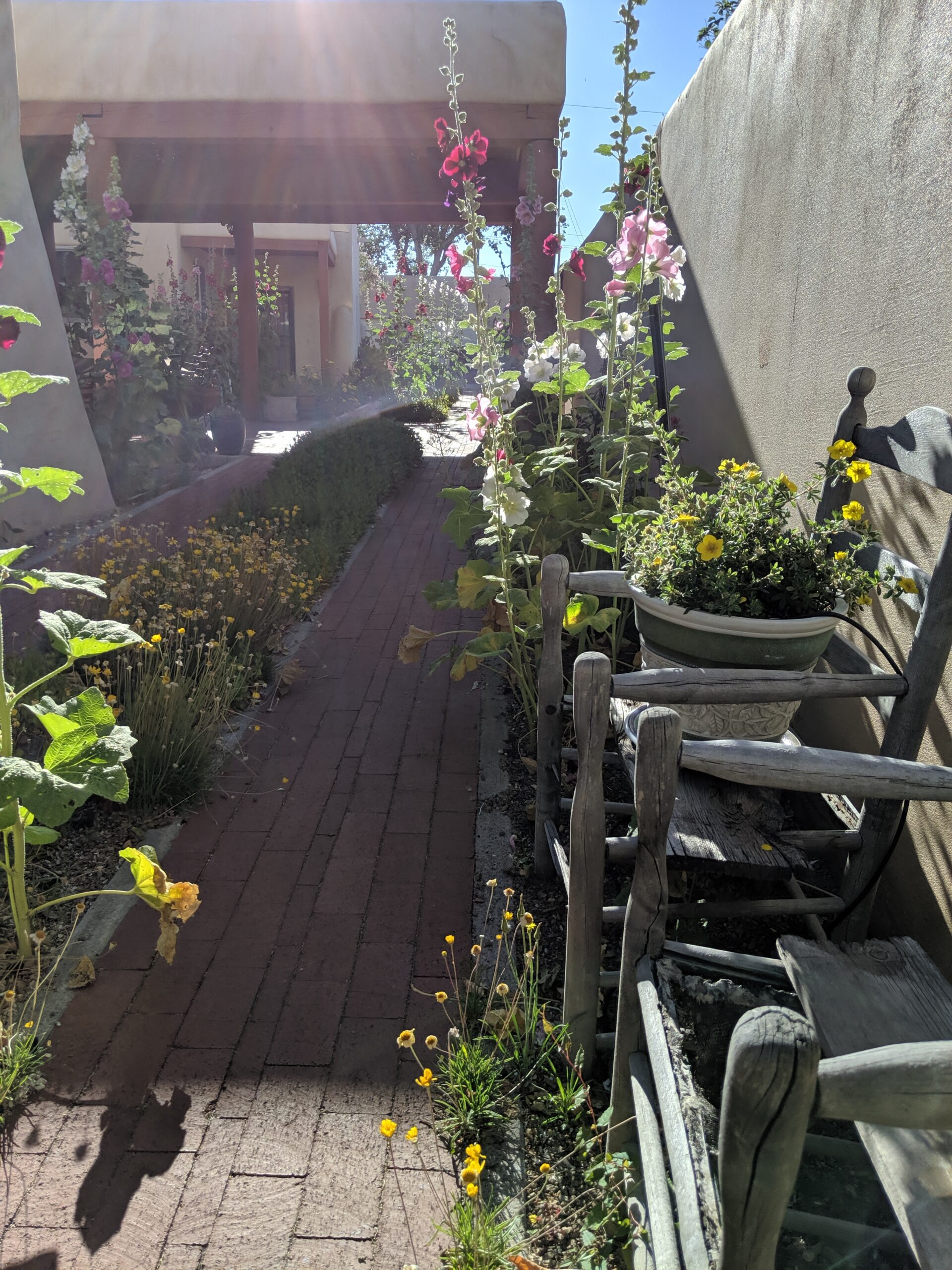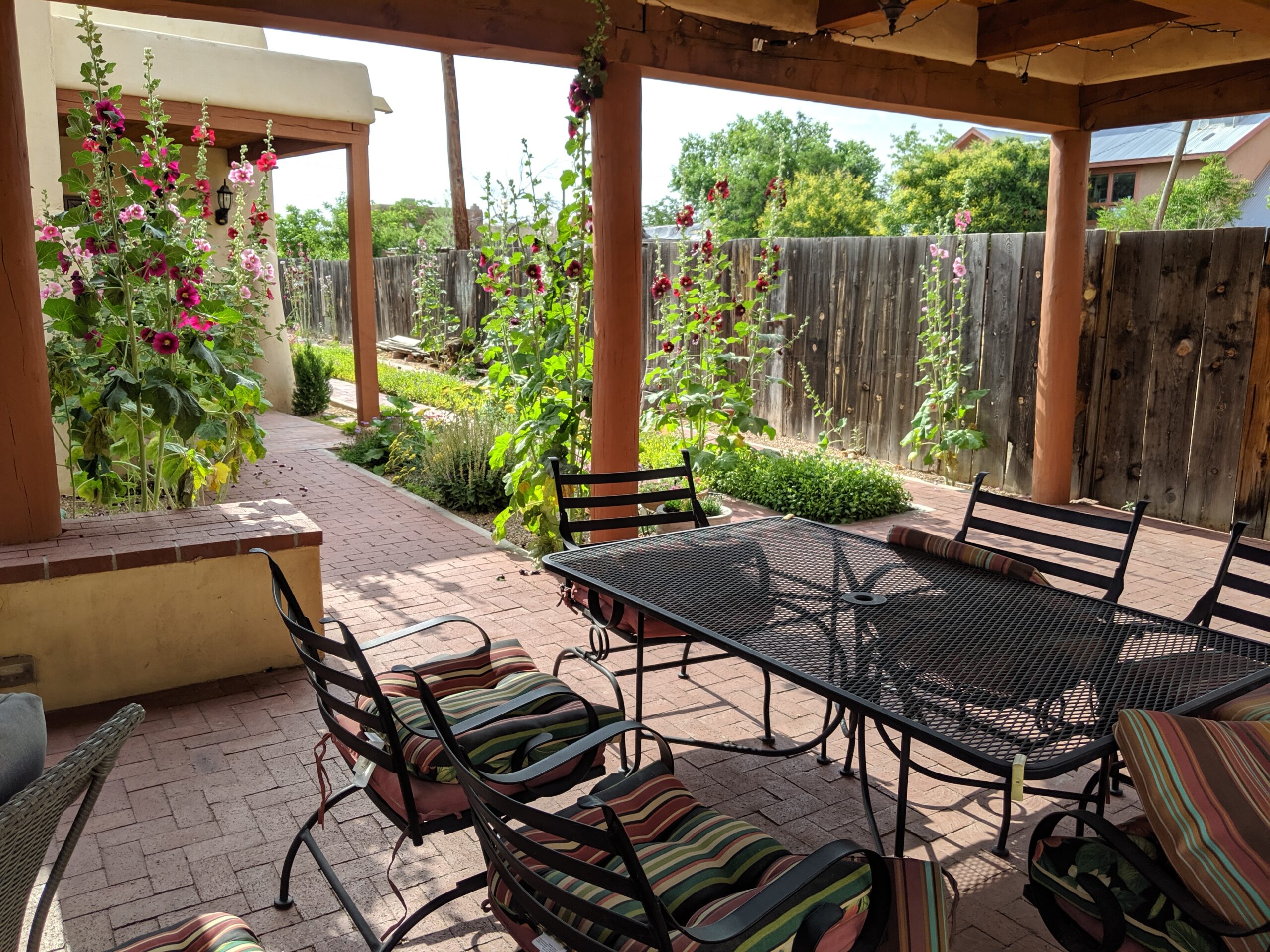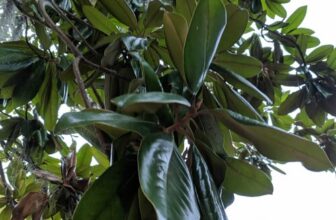Happy Thursday GPOD!
I’m back again with your daily dose of garden-y goodness! Today, I wanted to take the opportunity to share some photos of a darling little driveway garden I found in Albuquerque, New Mexico. This trip was some time ago, but I’ve never really been able to shake how special this space felt. It is such a great example of how what you can do with limited space, and how you can make any area feel magical and inviting with the right mix of plants.
Also, I just love to highlight a garden in the Southwest. Lots of folks don’t realize that we have regional-specific gardening advice that we publish online each month. No matter what area of the country you live in, there’s an incredible breadth and depth of information available for you from an expert or professional horticulturist in your region. You can find that in the ‘My Region‘ section of our website – you need to be a member to access it, but it is 100% worth it if you want garden tips and plant advice tailored to you (and who doesn’t)!
A shot in from the street side of the driveway showcases the garden. It isn’t large, but they have truly made use of all areas they could, even a strip of Angelita daisy (Tetraneuris acaulis, Zones 4 to 9), a perennial native to the Southwestern and Midwestern US and Canada, down the middle of the “driveway”. Angelita daisy, also known as sundancer daisy, is drought-tolerant and grows compactly about 1 foot wide and high, making it a wonderful addition to this area.
A view the opposite direction showcases hollyhocks (Alcea rosea, Zones 3 to 9, biennial) and Indian blanket (Gaillardia pulchella, annual). Believe it or not, this was my first interaction with hollyhocks and I was absolutely blown away with how the gardener utilized them to such a gorgeous effect. On the left, you’ll see silver lace vine (Fallopia baldschuanica, Zones 4 to 7) also known as Russian vine. This plant can become aggressive in areas where drought doesn’t keep it in check, so plant with care.
A close up of Indian blanket also known as ‘Firewheel’ flower.
A close up of a magnificent hollyhock bloom.
Further down the driveway, we see a dazzling array of hollyhock plants beckoning. Hollyhocks can vary in height and though classically known as a biennial, there are now more perennial-types available.
The back patio looks to be a divine place to sip a cool beverage on a hot day. I love that the height of the hollyhocks also lends a bit of privacy to this area.
Tomorrow is my last day managing the GPOD! I’ve enjoyed spending this week with you all, and I look forward to seeing your gardens grow and change, too.
We want to see YOUR garden!
Have photos to share? We’d love to see your garden, a particular collection of plants you love, or a wonderful garden you had the chance to visit!
To submit, send 5–10 photos to [email protected] along with some information about the plants in the pictures and where you took the photos. We’d love to hear where you are located, how long you’ve been gardening, successes you are proud of, failures you learned from, hopes for the future, favorite plants, or funny stories from your garden.
Have a mobile phone? Tag your photos on Facebook, Instagram, or Twitter with #FineGardening!
Do you receive the GPOD by email yet? Sign up here
Fine Gardening Recommended Products

X3 Stainless Steel Midi-Mod Fountain
Fine Gardening receives a commission for items purchased through links on this site, including Amazon Associates and other affiliate advertising programs.
3 feet high, it’s a more compact version of the larger X3 Fountain
-9.5″ w by 9.5″ d
-Powdercoat over stainless steal

Wagner’s 52003 Classic Blend Wild Bird Food, 6-Pound Bag
Fine Gardening receives a commission for items purchased through links on this site, including Amazon Associates and other affiliate advertising programs.
Classic wild bird food uses the highest quality grains to attract backyard wild Birds. A high-quality mix containing Millet, milo, cracked corn and Sunflower for a wide range of wild birds to enjoy. Perfect for tube, hopper, or platform feeders. Great to feed in all seasons! Perfect for the winter, when seeds are scarce; spring and summer for hatchlings; and autumn to give energy to migrating birds. This seed will help you fill your yard with birds such as Jays, cardinals, doves, Juncos, finches, goosebeaks, any many more.

The Nature of Oaks: The Rich Ecology of Our Most Essential Native Trees
Fine Gardening receives a commission for items purchased through links on this site, including Amazon Associates and other affiliate advertising programs.
The Nature of Oaks reveals what is going on in oak trees month by month, highlighting the seasonal cycles of life, death, and renewal. From woodpeckers who collect and store hundreds of acorns for sustenance to the beauty of jewel caterpillars, Doug Tallamy illuminates and celebrates the wonders that occur right in our own backyards. He also shares practical advice about how to plant and care for an oak, along with information about the best oak species for your area.

